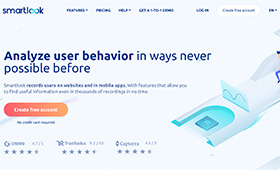The Future User Experience of the Self-Driving Car
We’re at an inflection point with personal transportation. Driving by hand is old-school. Driverless or self-driving cars are the future. What might the user experience look like in the coming age of the self-driving car?
It’s the year 2050. You’re in your silver, single-pod car on your way to work. It’s almost unrecognizable as a vehicle in today’s standards.
The office is an hour away, but it’s no big deal because you’re not the one driving. Your car starts itself, drives itself, and accomplishes what most chauffeurs can do—including chit-chatting about the weather.
Instead of a steering wheel, you have a large, flat surface similar to a desk. You’ve decided to review your presentation a little early, so you tap your finger on the top-left corner of the dashboard, instantly turning the standard-looking desk into a sizable touchscreen. Your front window fades out your true surroundings to present you with the work you just accomplished yesterday and are now reviewing.
The Self-Driving Car Today
While self-driving cars, or autonomous vehicles (AV), are not at the point where you can take your hands off and take a nap, they’ve made quite a lot of progress in the last few years.
Driverless cars are split into multiple levels of self-driving capabilities. Level 0 automation means that the car has no autonomous capabilities while level 5 automation means that the car can drive itself anywhere at any time.
As of early 2020, most people consider Google’s Waymo is at level 4, which means that the vehicles can handle driving situations without human intervention in a defined, geofenced area, but cannot handle the driving, for example, off-road driving. You’ll probably find a steering wheel in these cars, but will rarely find anyone driving it by hand except for in emergencies.
Self-Driving Car Predictions
There isn’t an agreed-upon year for when the level 5, full self-driving car will be released among leaders and experts in the field. Elon Musk is famous for over-eagerly predicting its release, saying a few years ago that it would be released in Teslas in 2017 but now saying by the end of 2020.
While Musk’s prediction is one of the loftier predictions, other leaders are saying that it will be a few years to decades before the technology and the laws will allow for fully driverless cars.
There is also competition among many auto manufacturers to produce self-driving taxies that don’t include a steering wheel in their cars. Tesla promises individually-owned driverless cars that can turn into driverless taxis when not being used by the owner. Ford plans to scale its own autonomous taxis fleet around the country in 2021.
The Coming User Experience of Self-Driving Cars
The UX, or user experience, of cars will certainly change in the coming years when driving is no longer a requirement. As car companies shift their focus away from the driving experience to the sitting and waiting experience, they’ll have to come up with some innovative experiences to stand out from the competition.
Let’s explore some possibilities of how the user experience might look:
Human-Car Interactions
Automatic Doors: When you approach your car, it may not require you to open it anymore. With the use of location approximation technology, the car will know when you’re approaching and open the door automatically for you.
Car Hailing: Alternatively to going to your car, your car might come to you. Just call it using an app and your car will know where to find you.
Autonomous Taxi Service: If you’re in a different country, use one of the many autonomous taxi services to hail a ride. It will be cheaper than today’s taxis because there would be no driver and the technology would be ubiquitous.
Touch Screen Dashboard: As mentioned earlier, you might have a large touch screen in front of you in the form of a dashboard in the place of a steering wheel. This new, very large-sized screen means applications need to be responsive to its new platform.
Hand Gestures: How about gesturing that you want to move on to the next song instead of tapping on the dashboard when laying back in your seat? Whether for work or for play, incorporating hand gestures can be a powerful way to improve the user experience when interacting with the car. Make sure to do a lot of user testing so that it works the way you intended.
Transfer Your AI to the Car: With the coming Internet of Things, devices that you wouldn’t expect to talk to each other will all be interconnected. With that possibility, you might transfer your personal assistant AI from your home to your mobile device to your car, allowing it to follow you no matter where you go.
Voice Command: More than 40% of adults use voice search today. That trend is expected to grow to more than half of all smartphone users in 2020. It will be imperative that the driverless car of the future understands users by their voice. Not only does this help handicap users who cannot see, but it adds a human element to the car.
Human-Human Interactions
Rotating Chairs: If there’s no reason to look forward, then encouraging interaction among riders by allowing front seats to turn around will be something many customers could enjoy. While traveling, why not have a game night in the car?
Middle table: Going along with the idea of a game night in the car, you can add a table in the middle of all the seats to act as a board game table. Alternatively, it can be used for eating, writing, etc.
Sounds
Silent Mode: If commuters don’t have to drive anymore, it won’t be uncommon for some to sleep in the car. If a commuter lives an hour and a half away, they might want to sleep on the way to work. Car companies should consider a sound-proof windows option for customers.
Feel
Smoother Rides: Autonomous cars from their respective brands are a sort of hive mind, meaning that whatever one car learns from driving the other ones learn as well through the cloud. This information all melds in the cloud and distributes among all of the vehicles in the fleet.
A few decades from now, when fleets have driven billions to trillions of miles collectively, these cars will be able to drive more smoothly than the best chauffeurs. That means you’ll rarely ever smack your face with your phone from a sudden swerve.
Environment
Less Parking Structures: If you live in a city, then you know how congested cities are with parking structures. You’ll see them on every other block. But in the future, cars will be able to park themselves in much taller structures without human intervention. That means you can summon your car from a faraway distance where most of the cars are kept out of people’s sights and, potentially, cities.
Will Cars Designs Converge or Diverge?
With the advancement of hardware and AI, there’s almost no limit to what autonomous vehicles may look like in the future. Their form and functionality will probably change according to their target demographic; a commuter’s car might be two-seated, have sound-proof glass, and have a large touchscreen in the front for work. On the other hand, a family car might have 4-6 seats, seats that can swivel around, and a pop-up table in the center of the car for interacting and playing games.
Maybe these cars will act incredibly differently according to the needs of the specific customer. Maybe they will converge and just be another mode of transportation. What do you think people will want to see in their autonomous car of the future?







It’s incredible to see how technology is being advanced day by day, but I just have the feeling that many people won’t enjoy the ride of an autonomous car since there is no human driving it and people won’t feel safe. Anyways loved the article. Thanks for sharing.